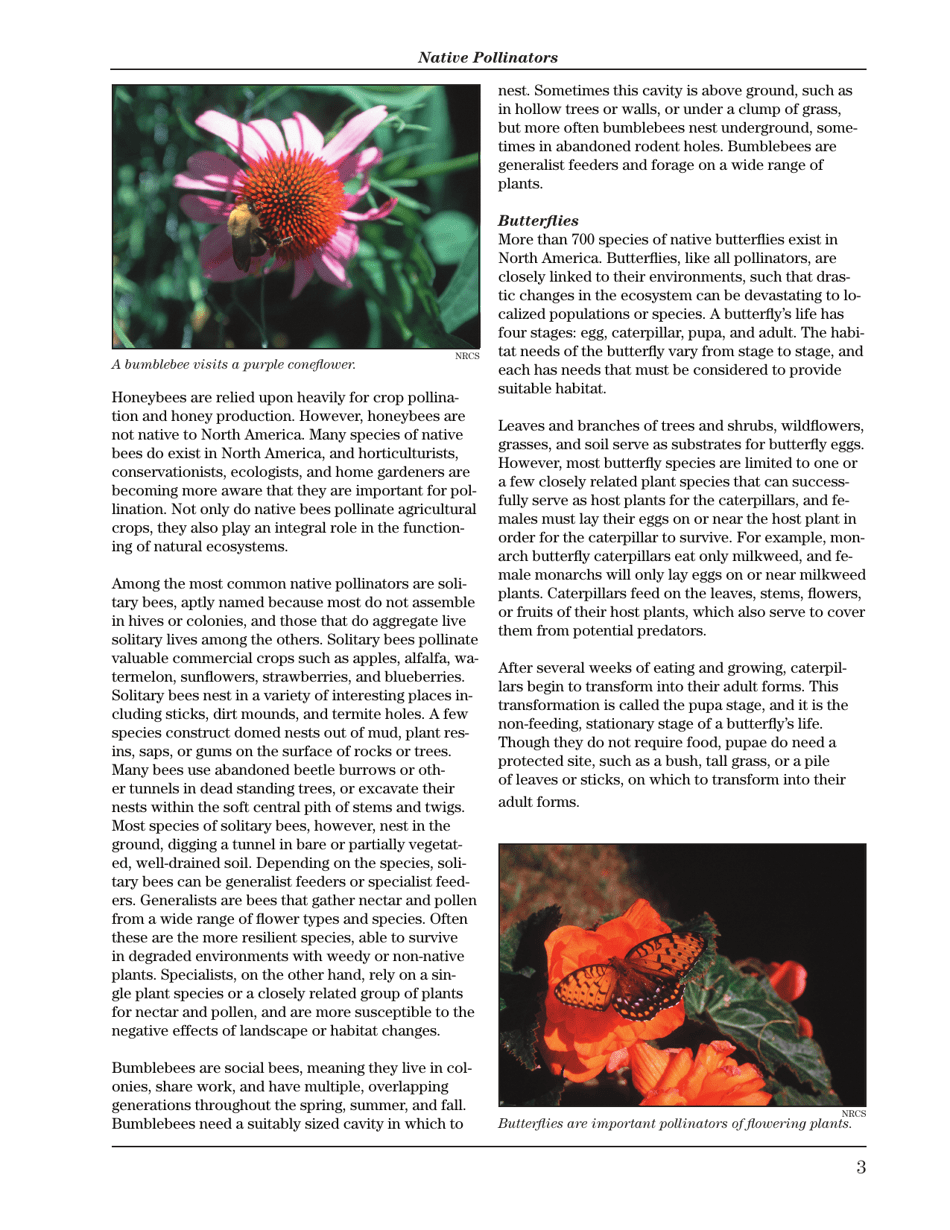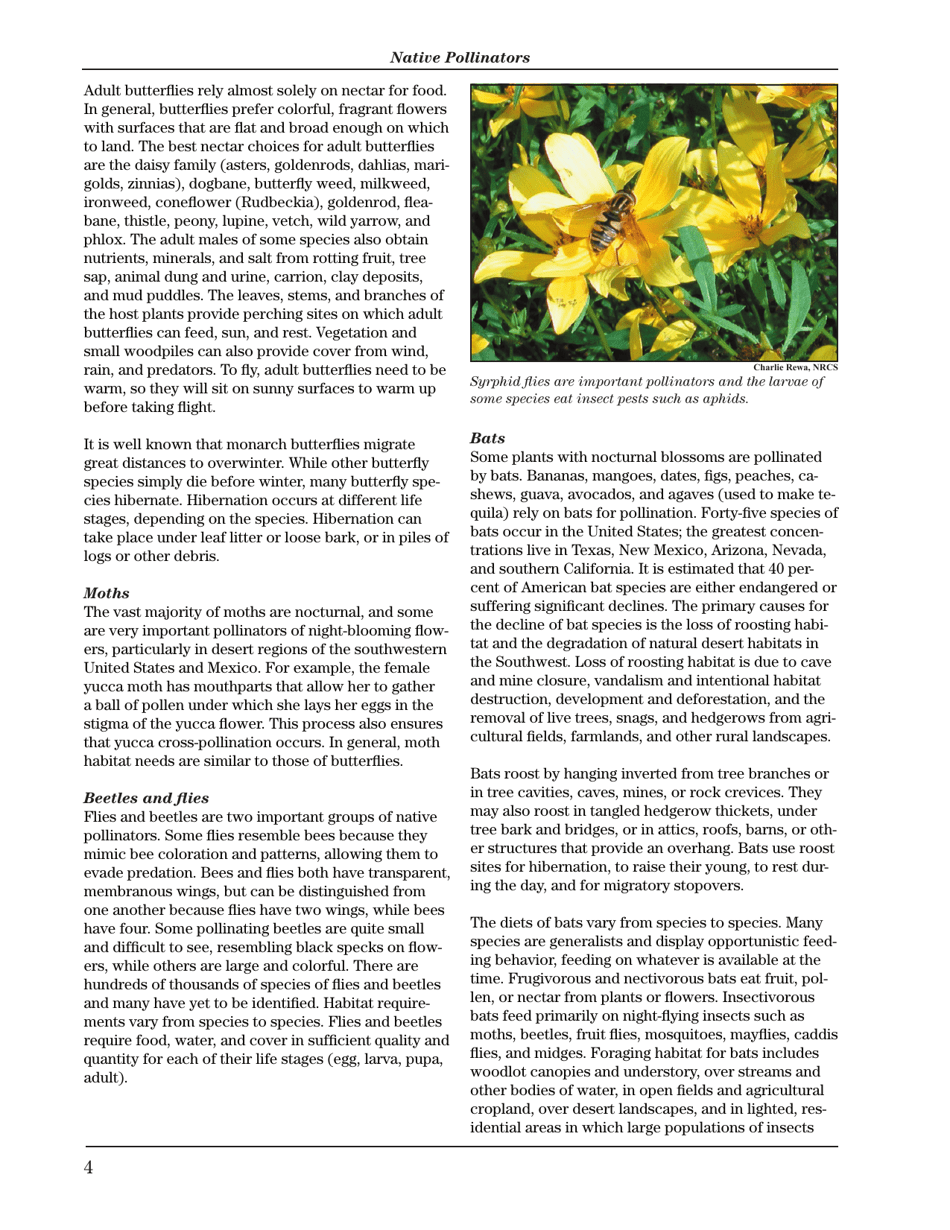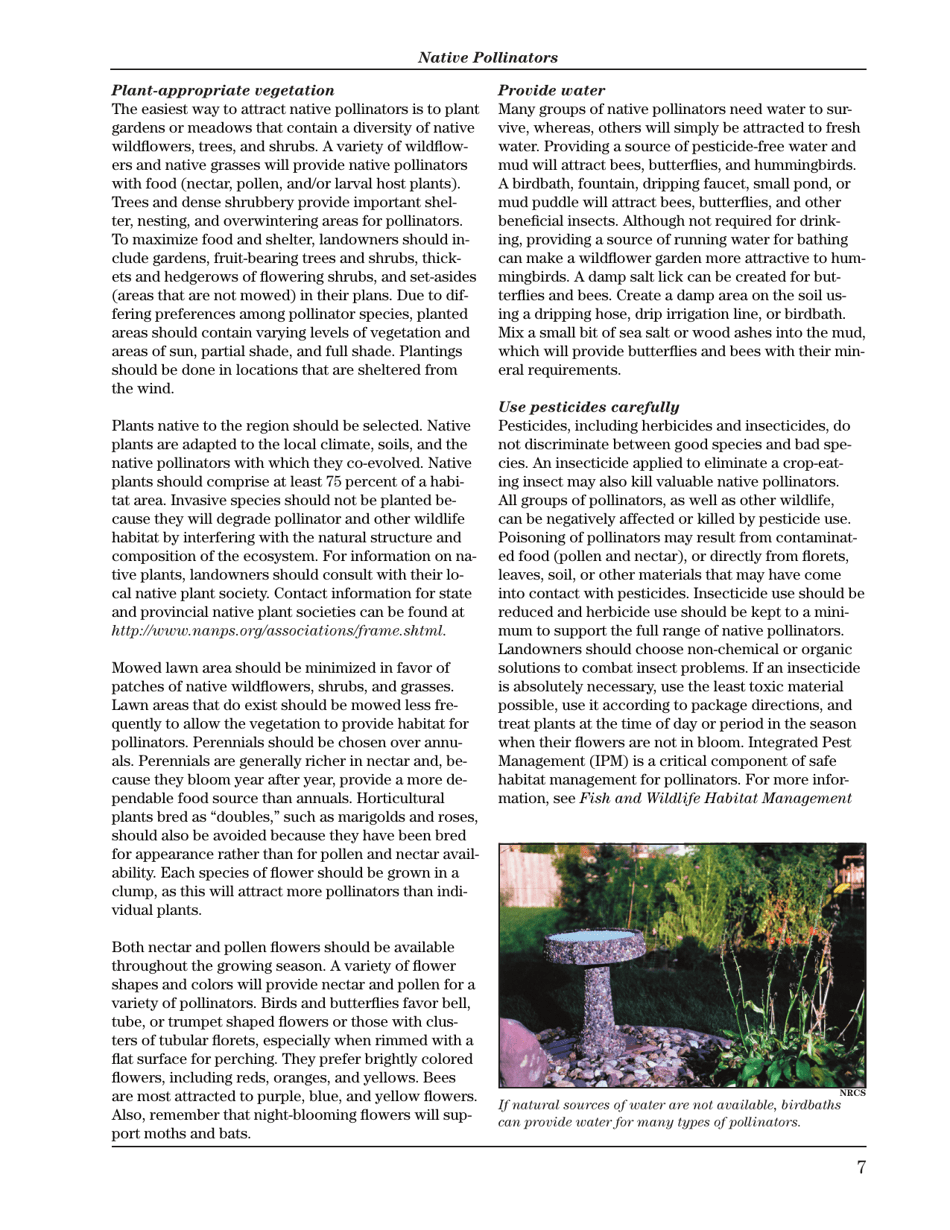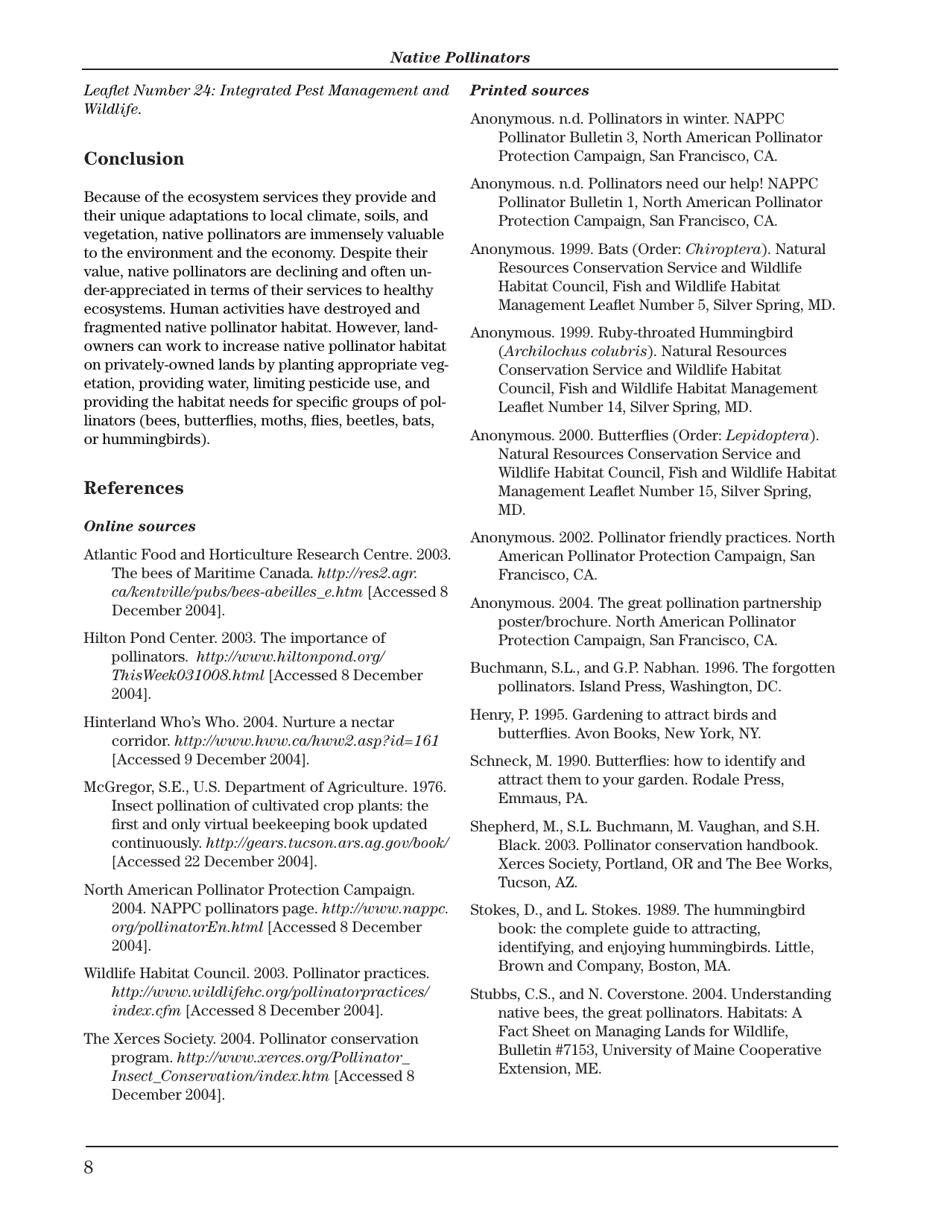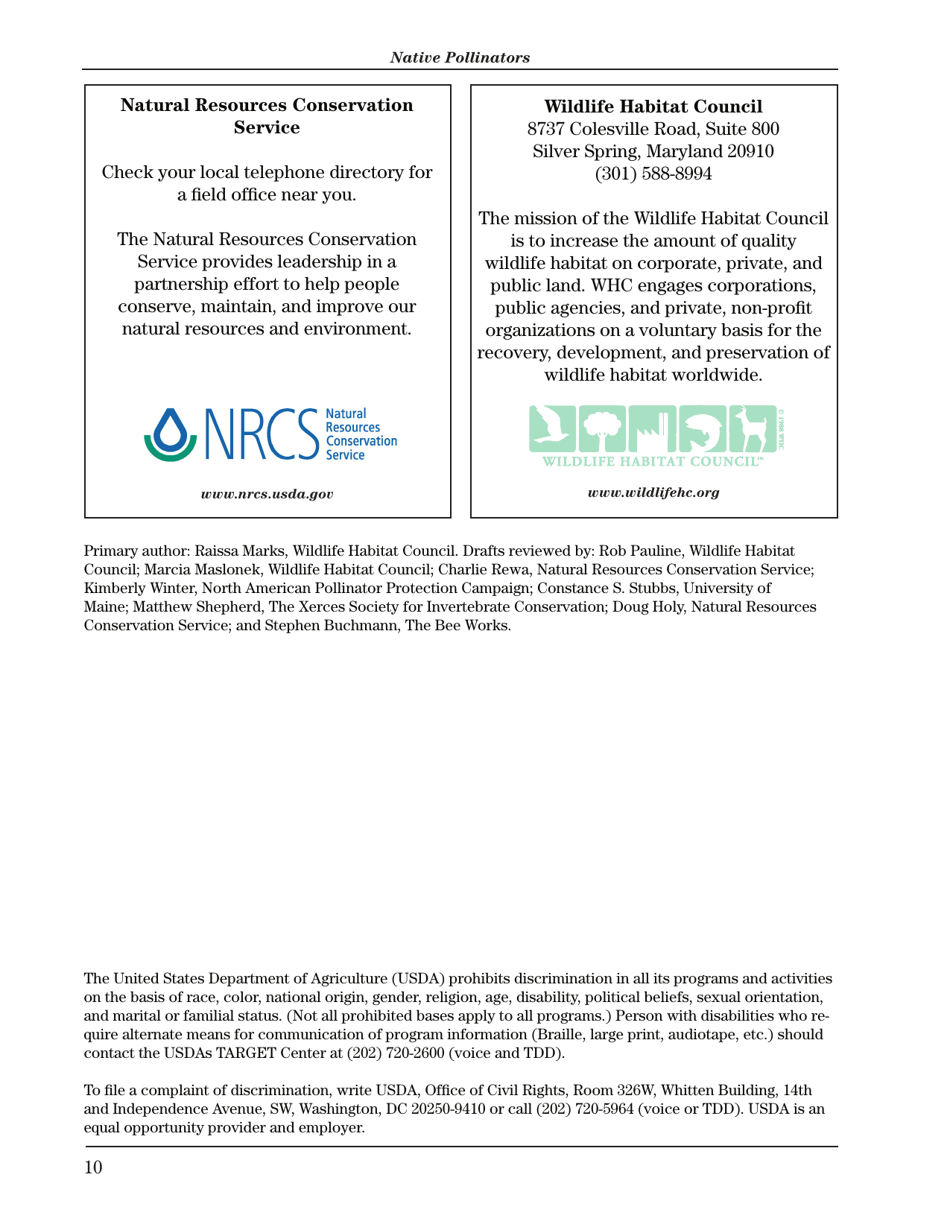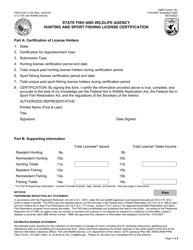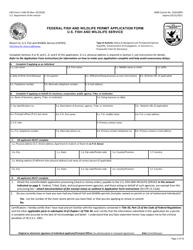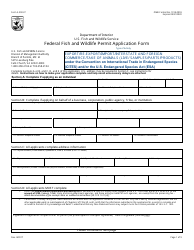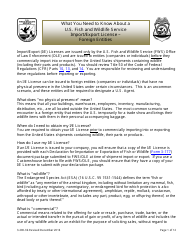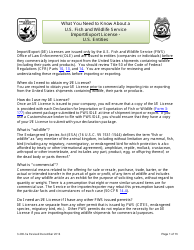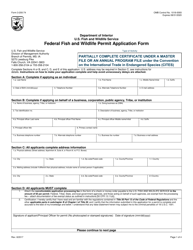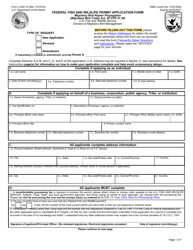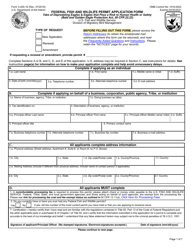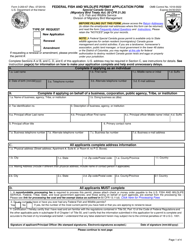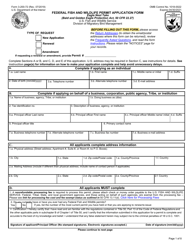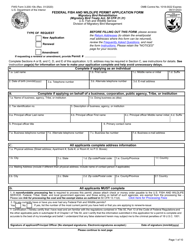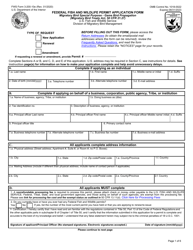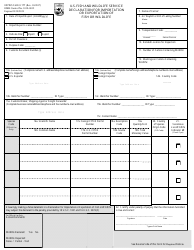Fish and Wildlife Habitat Management Leaflet Number 34: Native Pollinators
Fish and Wildlife Habitat Management Leaflet Number 34: Native Pollinators is a 10-page legal document that was released by the U.S. Department of Agriculture on May 1, 2005 and used nation-wide.
FAQ
Q: What is Fish and Wildlife Habitat Management Leaflet Number 34 about?
A: Leaflet Number 34 is about Native Pollinators.
Q: What are native pollinators?
A: Native pollinators are insects and animals that help in the pollination of plants.
Q: Why are native pollinators important?
A: Native pollinators play a crucial role in the reproduction of many plant species and the production of fruits and seeds.
Q: How can I attract native pollinators to my garden?
A: You can attract native pollinators by providing food sources such as native flowers, nesting sites, and avoiding the use of pesticides.
Q: What are some examples of native pollinators?
A: Examples of native pollinators include bees, butterflies, moths, flies, beetles, and birds.
Q: Why is it important to conserve native pollinator habitats?
A: Conserving native pollinator habitats ensures the survival and continued pollination services provided by these important species.
Form Details:
- The latest edition currently provided by the U.S. Department of Agriculture;
- Ready to use and print;
- Easy to customize;
- Compatible with most PDF-viewing applications;
- Fill out the form in our online filing application.
Download a printable version of the form by clicking the link below or browse more legal forms and templates provided by the issuing department.













